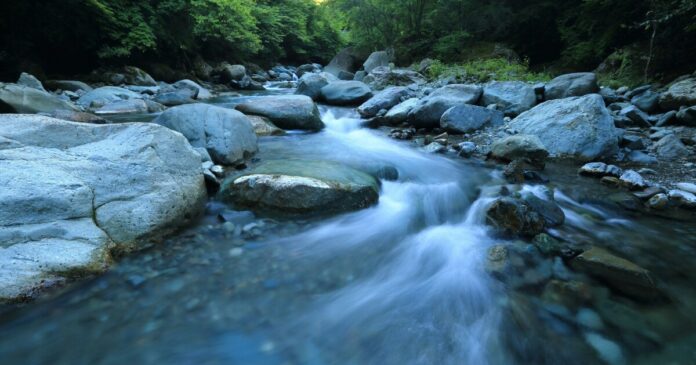A study examining nearly 1,500 river sites in the US between 1980 and 2022 has shown that river heatwaves are happening up to four times faster than air heatwaves and lasting nearly twice as long. The finding has major implications for aquatic life.
“Our findings show that riverine heatwaves are increasing faster than air heatwaves, a trend likely happening worldwide,” said Kayalvizhi Sadayappan, a postdoctoral scholar in the Department of Civil and Environmental Engineering at Penn State, and lead study author. “This raises the risk of rivers experiencing both extreme heat and low water flows at the same time, which can cause conditions that can lower oxygen levels, stress aquatic life and even trigger large-scale fish die-offs.”
The study revealed that temperatures rose above 15 °C (59 °F) at 82% of sites studied for an average of 11.6 days per year. This is the temperature at which riverine life begins to get stressed. The researchers found that the temperatures have climbed fastest in the Rocky and Appalachian Mountains as well as in the Northeastern US.
The most extreme river heat waves were found in the Appalachian and Southern regions of the country, with large increases up to 20 °C (68 °F) observed in 74% of the sites. The area with the lowest river temperature rises was found to be the Midwest, where only five days on average saw temperatures climb above 15 °C and only one where the temperature crested 20 °F.
“Rivers are often thought of as safe and cool havens protected from extreme temperatures,” said corresponding author Li Li. “Our study shows, for the first time, that rivers are experiencing a more rapid increase in frequency, duration and intensity of heatwaves than air, and are increasing at about two to four times the rate of air heatwaves.”
The researchers cite warming temperatures as the primary contributor to river heat waves, but also say agriculture and the building of dams play roles as well.
“Agriculture has been mitigating riverine heatwaves via cooler air and water during irrigation, as indicated by declining trends in the frequency, duration and intensity of riverine heatwaves in crop-cultivated areas,” said Sadayappan. “On the other hand, dams have been accelerating trends in riverine heatwaves. In particular, large dams have been contributing towards elongating riverine heatwaves.”
In addition to harming wildlife, the study indicates that the rapid rise in river temperatures can also affect populations who rely on stable river temperatures for their livelihood, and it can also spike the cost of drinking water treatment. The researchers say their findings can now inform strategies to mitigate river heat waves, a phenomenon that, until now, has been relatively poorly studied and reported.
“This information can provide warning signals and support adaptive management during riverine heatwaves,” Sadayappan concluded. “More importantly, it can inform long-term mitigation efforts to restore vegetation along riverbanks to provide shade, improve dam management, expand green infrastructure and reduce water diverted from rivers.”
The study has been published in the journal PNAS.
Source: Penn State


